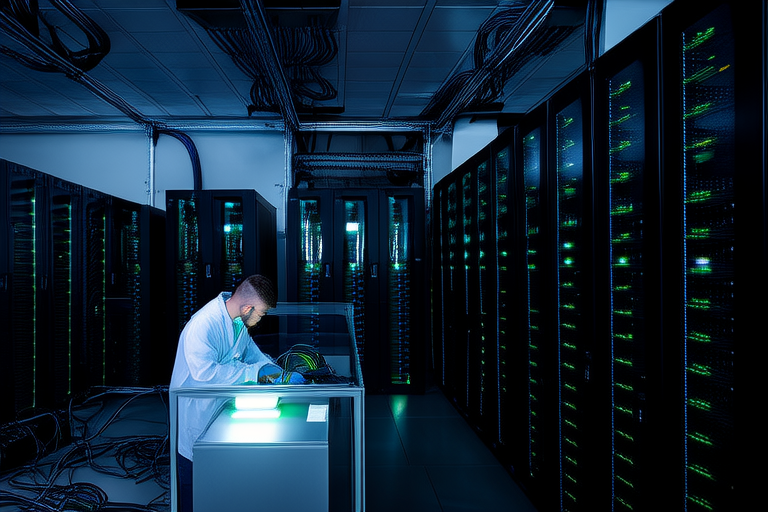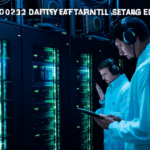“`html
The Future of Data Processing: How Cloud and Edge Computing Complement Each Other
Introduction
Data processing has evolved significantly over the years, transforming from simple local computations to complex, distributed systems capable of handling vast amounts of information. At the heart of this evolution are two pivotal technologies: cloud computing and edge computing. Both offer unique advantages, but their true potential is realized when they work in harmony.
Cloud Computing: Cloud computing refers to the delivery of computing services—such as servers, storage, databases, networking, software, and analytics—over the internet (“the cloud”). This allows businesses to store and process data remotely, reducing the need for on-premise infrastructure.
Edge Computing: Edge computing, on the other hand, involves processing data closer to where it is generated, rather than sending all data to a central location for analysis. By doing so, edge computing reduces latency and bandwidth usage, making it ideal for real-time applications.
Understanding the relationship between cloud and edge computing is crucial for future technological advancements. This article explores how these two technologies complement each other, providing insights into their combined potential and future outlook.
Understanding Cloud Computing
Cloud computing offers numerous benefits that make it an indispensable tool for modern businesses. Its scalability allows companies to adjust resources according to demand, ensuring optimal performance without over-provisioning. Additionally, cloud computing is highly cost-effective, as it eliminates the need for expensive hardware and maintenance costs associated with on-premise solutions.
One of the key advantages of cloud computing is its flexibility. Users can access cloud services from anywhere with an internet connection, enabling remote work and collaboration. Moreover, cloud platforms provide robust security measures, protecting sensitive data from unauthorized access.
Cloud computing excels in scenarios requiring large-scale data storage and complex analytics. For instance, e-commerce platforms use cloud services to manage vast inventories and process millions of transactions daily. Similarly, healthcare organizations leverage cloud solutions to store patient records securely and perform advanced diagnostic analyses.
Understanding Edge Computing
Edge computing processes data at the network edge, near the source of data generation. This approach minimizes latency and reduces the amount of data that needs to be sent to a central server for processing. As a result, edge computing is particularly beneficial for applications that require real-time decision-making, such as autonomous vehicles and industrial automation.
In IoT (Internet of Things) applications, edge computing plays a critical role by enabling devices to operate independently without constant reliance on a central server. This not only improves response times but also enhances system reliability, especially in environments with limited connectivity.
Autonomous vehicles exemplify the power of edge computing. These vehicles rely on sensors to gather real-time data about their surroundings, which must be processed quickly to ensure safe operation. By performing computations locally, edge computing ensures timely responses, enhancing overall safety and efficiency.
How Cloud and Edge Computing Complement Each Other
Cloud and edge computing are not competing technologies but rather complementary solutions that work together to optimize data processing. While cloud computing excels in tasks involving large-scale data storage and complex analytics, edge computing shines in scenarios requiring real-time processing and reduced latency.
For example, in smart city initiatives, edge computing can handle initial data filtering and processing at the network edge, reducing the volume of data that needs to be transmitted to the cloud. Once the data is aggregated and analyzed in the cloud, actionable insights can be generated and disseminated back to edge devices for implementation.
The healthcare industry also benefits from the synergy between cloud and edge computing. Wearable health devices can process vital signs locally using edge computing, transmitting only relevant data to the cloud for further analysis. This approach not only preserves privacy but also ensures rapid response times, critical for emergency situations.
Hybrid architectures that integrate both cloud and edge solutions are becoming increasingly popular. These architectures allow organizations to leverage the strengths of each technology, optimizing resource utilization and improving overall system performance.
Challenges and Considerations
Integrating cloud and edge computing presents several challenges that must be addressed to fully realize their potential. One major concern is security. As more data is processed at the edge, there is an increased risk of data breaches and unauthorized access. Implementing robust security measures, such as encryption and access controls, is essential to protect sensitive information.
Interoperability is another challenge. Different edge devices and cloud platforms may use varying protocols and standards, leading to compatibility issues. Standardizing protocols and promoting open APIs can help overcome these obstacles, facilitating seamless communication between edge and cloud components.
To address these challenges, organizations should adopt best practices in data management, ensuring consistent policies and procedures across all systems. Additionally, investing in training and education can help employees stay up-to-date with the latest developments in cloud and edge computing, fostering a culture of continuous improvement.
Future Outlook
The future of cloud and edge computing looks promising, with several trends expected to shape their integration. The rollout of 5G networks will significantly enhance connectivity, enabling faster data transfer rates and lower latencies. This will further drive the adoption of edge computing, as more devices and applications require real-time processing capabilities.
Artificial intelligence (AI) and machine learning (ML) are also set to play a crucial role in the future of cloud and edge computing. These technologies can be used to optimize data processing workflows, improve decision-making, and enhance overall system performance. For instance, AI-powered algorithms can analyze data in real-time at the edge, providing immediate insights and recommendations.
The combination of cloud and edge computing will have a transformative impact on various sectors. In manufacturing, for example, edge computing can enable predictive maintenance, reducing downtime and improving operational efficiency. In the financial sector, real-time fraud detection powered by edge computing can enhance security and protect customer assets.
Conclusion
Cloud and edge computing are not competitors but partners in driving innovation. By understanding their relationship and leveraging their complementary strengths, organizations can build more efficient, scalable, and secure data processing systems. As technology continues to evolve, the integration of cloud and edge computing will become increasingly important, shaping the future of data processing and enabling new possibilities across industries.
“`


